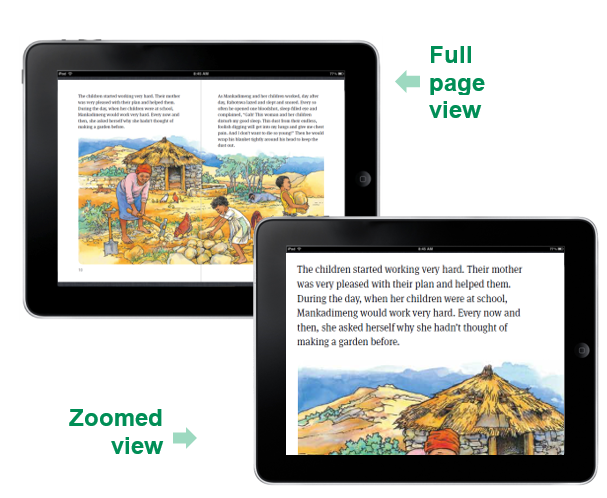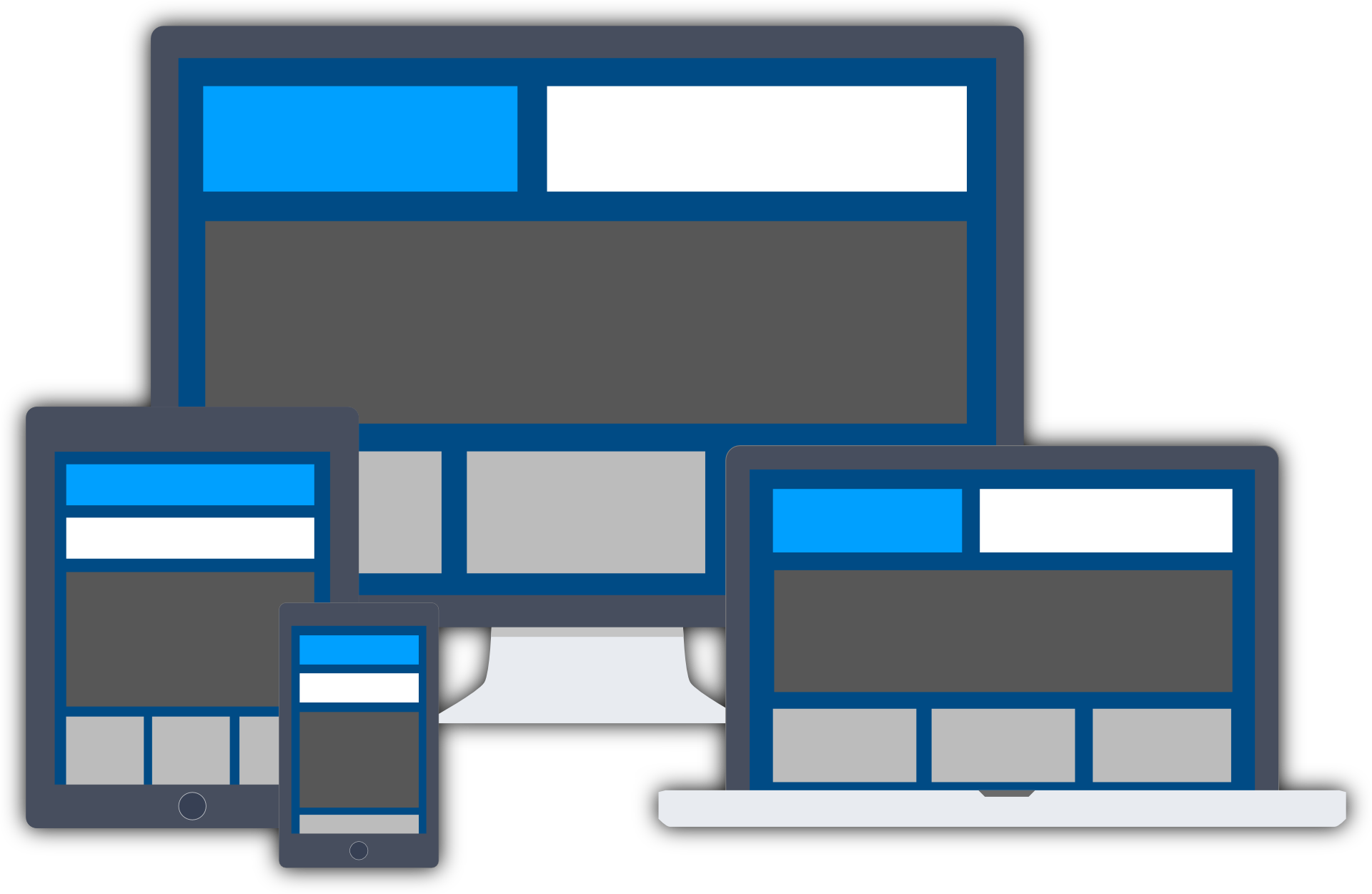Layout refers to the way the text and any extra elements such as images are arranged. We know that a newspaper and a book will have different layouts. Layout is also important in eBooks. There are two kinds of layout for eBooks – fixed layout and reflowable text.
Fixed layout
Fixed layout means that no matter what device you’re reading your eBook on, the images and text stay in exactly the same place on the page – in the way the eBook creator originally designed them. The layout is fixed, and will never change. You can move it only up and down or from side to side.
In the example of a full-page view below, we see two pages of the eBook side by side exactly as we would see those pages if a paper book were open in front of us. You’ll notice that in our example there’s a single image which is spread over both pages. Each page then has text above the image.
In the zoomed view, you’ll see that we can now see only part of the page on the left. If we keep zooming in, we’ll eventually see only some of the words. Although you can zoom in on a page, the font can’t be adjusted and will not flow to fit the screen. As you can see, even when the page is zoomed-in, the paragraph and layout remain the same.
PDFs are an example of a format that uses fixed layout.

Reflowable text
ePubs were designed with reflowable text in mind. With reflowable format, the device automatically resizes the text and layout settings, according to the needs of the user. The layout is not fixed. For example, if your device has a narrow screen or is in portrait mode, the text can flow over to the next line.
Look at our sample screens below. The left-hand side shows what the text looks like when you read this ePub in a portrait or vertical orientation.
But, if you change the screen orientation to landscape mode, the text and images will reflow or change their format to suit the wider, but shorter view.

Reflowable layouts are normally used if most of the eBook is made up of text. Some illustrations will work acceptably in reflowable layouts, but their position in relation to the text should not be of critical importance.
A reflowable layout allows the text and pictures to adjust to the screen size of any device. You can also adjust the settings for a reflowable format ePub.
You can also change the size of the letters and the font. Once you’ve chosen your new setting, the layout changes automatically because it’s a reflowable format.
One significant advantage of reflowable format is that vision-impaired readers can make the text bigger so it is easier to read.
